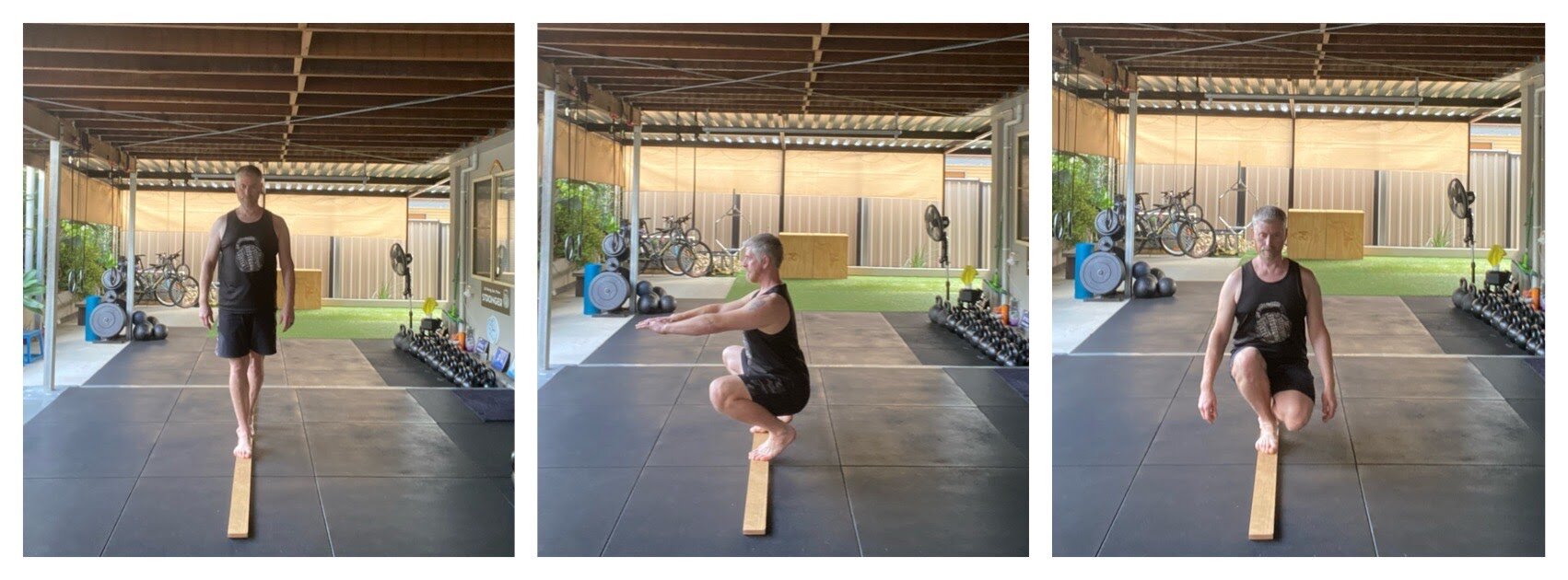What Strength Training Should Cyclists Do?
By Jamie Hunter
In the 80s and even early 90s we were led to believe dietary fat was the enemy and that training with weights would make us too bulky. As a competitive cyclist this struck a deep chord. Who wants to lug extra weight around the countryside?
‘Sigh’!
When an average days cycling was done, you’d raid the kitchen of every known carb, lean meats including liver (often boiled) and then clean the bike before resting.
The rules for rest went like this.
Don’t stand if you can sit and don’t sit if you can lie down.
The recipe of a cyclists life: Ride - Eat - Rest
There was also no known reason to get purposefully stronger with anything else but the bike. Specifically yes, riding the bike makes you better at bike riding, but if you value one percenters and optimisation, spending just a little time in the gym can be the missing magic potion.
I only discovered the benefits of strength training during a year out because of my knee injury. I was left with no option but to do circuit training routines with a pair of York dumbbells with exercises I took from Flex or Muscle & Fitness magazine; the only reference for resistance training I could find in the newspaper shop at the time.
Whilst not perfect, I had a strength routine of sorts to help keep up my strength and fitness and yikes, did I feel awesome when I got back to racing the year after, I even had these things called biceps and deltoids!
My haphazard routine has thankfully been vastly overhauled since then. The cyclists I currently train follow a very particular recipe consisting of essential ingredients for both the bike and life.
When programming for any sport, not just cycling, I believe it’s a duty of care to take into consideration life outside of the sport. I ask, ‘what will best serve the sport and not take away from other physical qualities, but add’? Essentially, I want the individual to be more resilient and better equipped for their cycling whilst also being more useful for life overall. This also addresses some of the issues cyclists exhibit off the bike from feet issues, lower back and shoulder complaints.
What strength training should cyclists do?
Cycling Essentials:
Hip Hinging - deadlifts, both bilateral and single leg deadlifts and kettlebell swings
Knee dominant movements - Squats, both bilateral and unilateral, like kickstand squats and step ups
Crawling forward, backwards and inverted and rocking rush ups with varied hand positions.
Balance Beam walks and balance drills
Life Essentials:
Deadbugs, Birddogs, and Rows
Single arm Carries (suitcase, goblet, overhead)
Get Ups. It takes a bit of coaching but proves a great tool to add to the toolbox.
Here’s a variation of the Turkish Get Up to consider
These two components are written into each training session, generally with the life essentials being built into the warm up and finishing sequences. The cycling essentials are placed after warm ups, when fresh.
The weekly placing of each hinge and squat variation are dependent on the cyclists bike sessions but generally, the heaviest lifts are best early in the week with the explosive work towards the end of the week.
Reps, sets, and intensities are a bit beyond the scope of this piece but should be programmed so as not to compete with the cyclists racing/training calendar.
Generally though, developing the hinge strength should be a priority whilst maintaining stable, healthy knees with squat variations is important. No exercise should ever be taken to fatigue or muscle/form failure. Instead, I like to use an average of around 75% perceived effort.
Minimum Effective Dose!
If pushed for a ‘program minimum’ for cyclists, I’d really have to recommend the single-leg deadlift, swings, walking kickstand squats on a balance beam (yes, seriously) and backward crawling. Just for the laugh though, a ‘minimum program minimum’ would probably take the form of kettlebell swings and crawling!
It’s always hard to reduce one's work into a short(ish) blog post. There are always lots of variables when writing an individual’s program.
If anyone would like to explore these movements further I am always happy to talk… or run a workshop to really dig in deeper!
Notes from two cyclists at FitStrong
Bashier:
A latecomer to cycling, Bash took up cycling at 38 to shed a few kilos but ended up with the bike bug. Now 43 he competes in Mountain Bike endurance events around the world from Nepal to Italy. Since starting at FitStrong Bashier reports often how much more aggressive he feels on the bike, even at the top of a climb or after a sprint. His upper body strength now allows him to wrestle the bike over the trails rather than just surviving them. He loves that he never gets visits from the cramp fairy too.
Bec:
Bec started at FitStrong with a ‘broken body’ in her own words. On her first visit, she presented with two sides of an A4 page listing every injury and surgery she had sustained from other sports and cycling. Bec competes all over Australia in Mountain Bike endurance races. After a short period of training, Bec noted how much more connected she feels with her body on the bike. Her reflexes seem sharper, all the imbalances ironed out and her confidence is boosted too with much better upper-body endurance.
About the Author:
Jamie Hunter has been a trainer since 1997 after a short career as a professional cyclist in Europe. Jamie owns and operates FitStrong Strength & Wellness in Albany Creek where he helps people move better and stronger. He is a StrongFirst L1 instructor, MovNat L1 instructor, Original Strength instructor and passionate about all things movement and strength… and eating good food!
(Pictures for simple illustration only and not instructional purposes. Videos available upon request)






